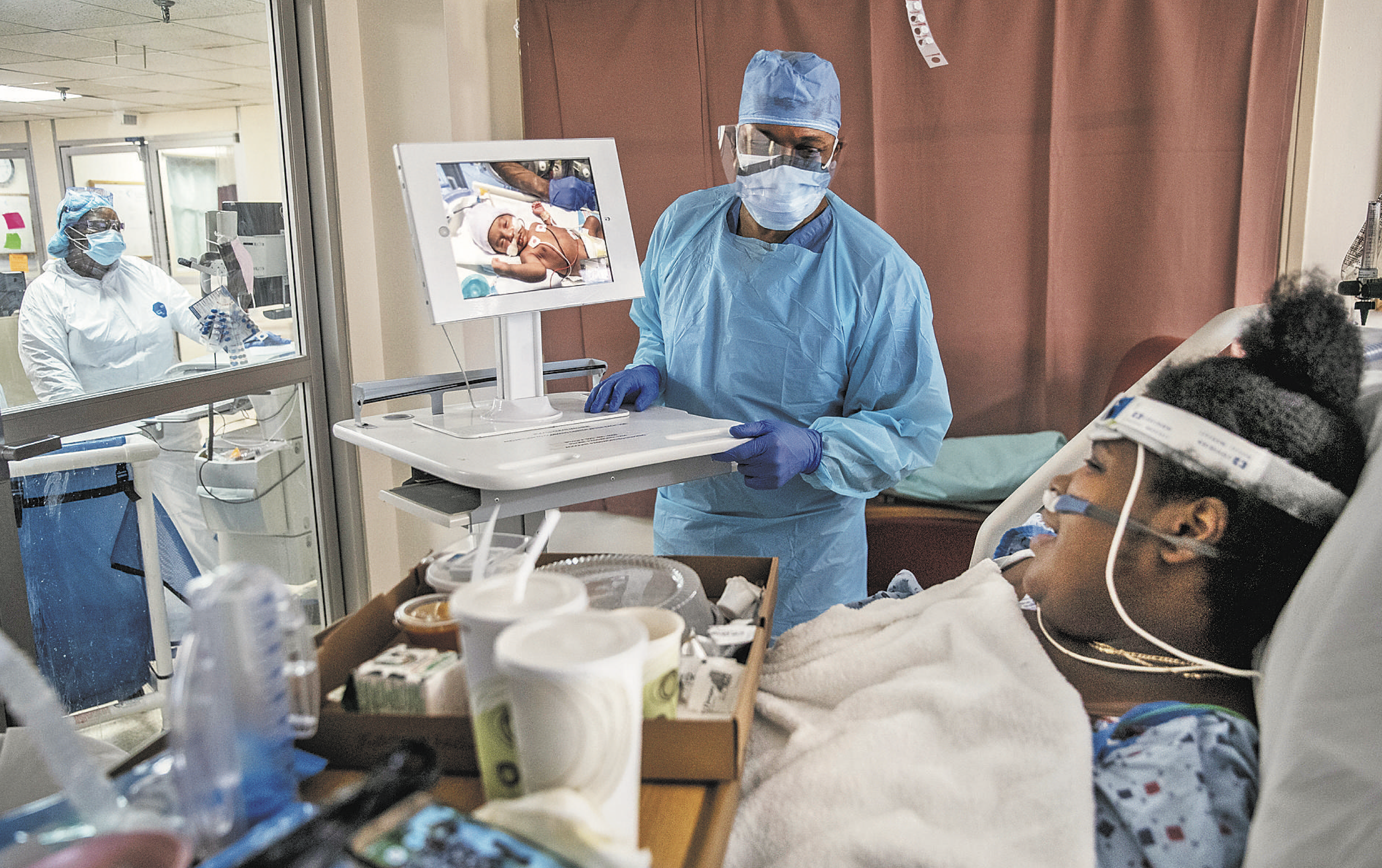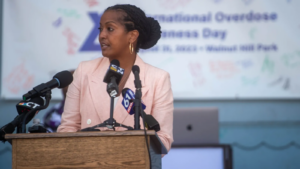By SHERI FINK
The worried doctors stood to- gether after their rounds, weigh- ing the risks. A 31-year-old preg- nant woman was in peril, her lungs ravaged by the coronavirus. If they delivered her baby now, it might reduce the strain on her body and help her recover.
But it was more than two months before the due date, and the infant would probably have difficulty breathing, feeding and maintaining temperature and be at risk for long-term health prob- lems. The surgery itself, a cesare- an section, would be a stressor for the mother.
In the end, the three obstetri- cians agreed: Neither the mother, on a ventilator, nor the child in her womb was getting enough oxy- gen, and the best chance to save
Even With Mothers Ill, Maternity Ward Is a Reason for Hope both was to bring the baby into the world. Today.
“We needed to do something,” said Dr. Erroll Byer Jr., chairman of the department of obstetrics and gynecology at the Brooklyn Hospital Center, reflecting on that morning nearly two weeks ago.
The woman, Precious Ander- son, was one of three critically ill expectant mothers at the same time in the community hospital, an unusual circumstance. Dr. Byer walked back and forth be- tween the maternity floor and the intensive care unit, checking on her.
The obstetrics unit, which delivers about 2,600 babies a year, is typically a place of celebration and fulfilled hopes. But amid the pandemic, it has been trans- formed.
Nearly 200 babies have arrived since the beginning of March, ac- cording to Dr. Byer. Twenty-nine pregnant or delivering women have had suspected or confirmed cases of Covid-19, the disease caused by the virus. They have been kept separate from other pa- tients, and medical workers wear protective clothing when attend- ing to them. Hallways where women walked as they endured labor are empty, with the mothers- to-be confined to their rooms. Multiple doctors and nurses in the department have fallen ill.




